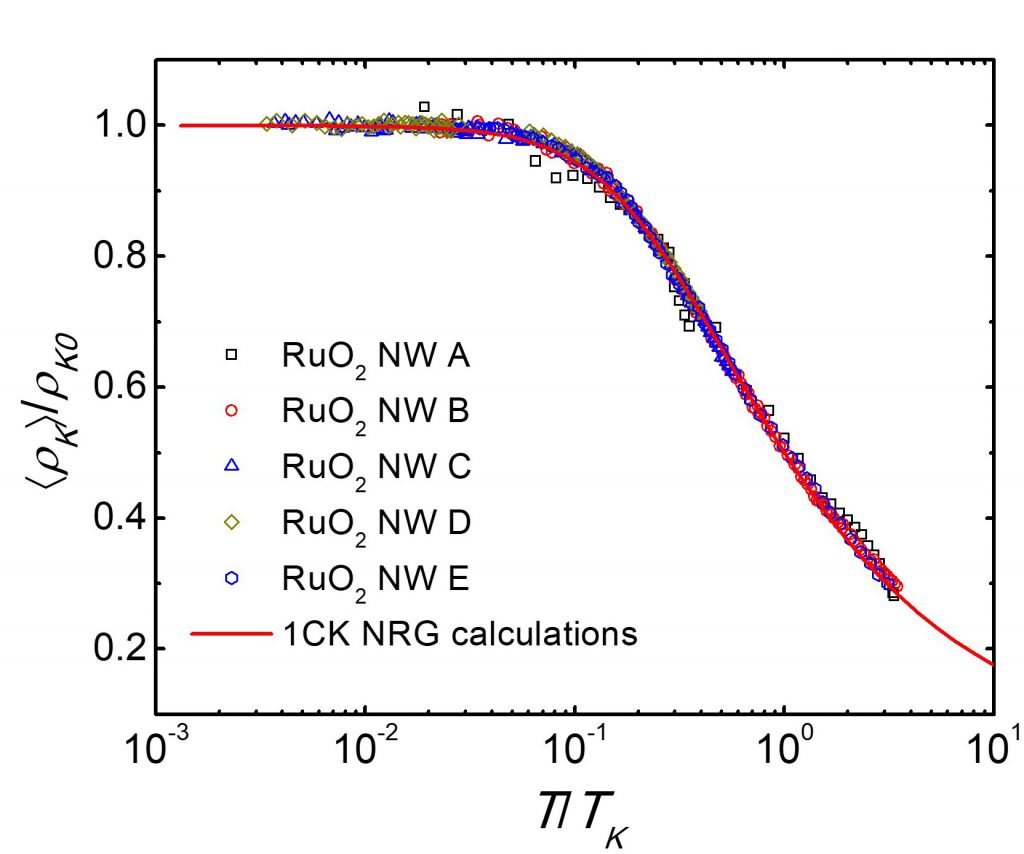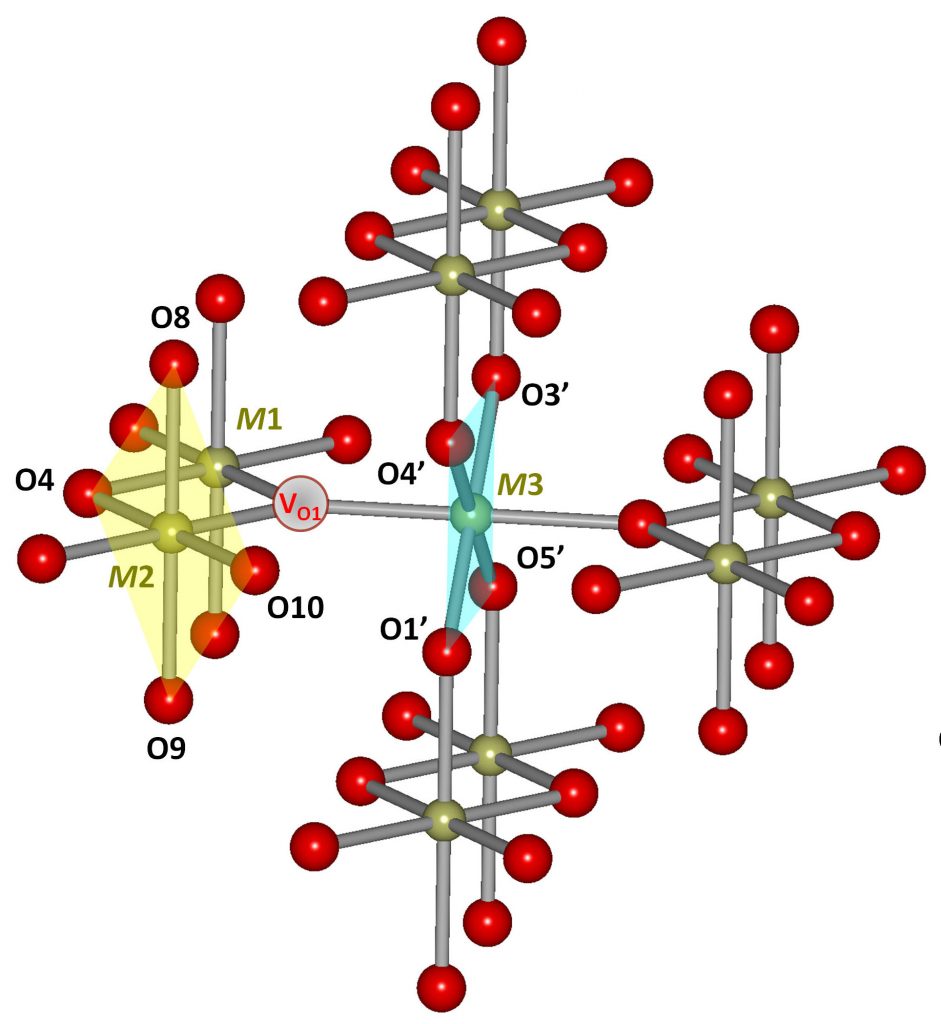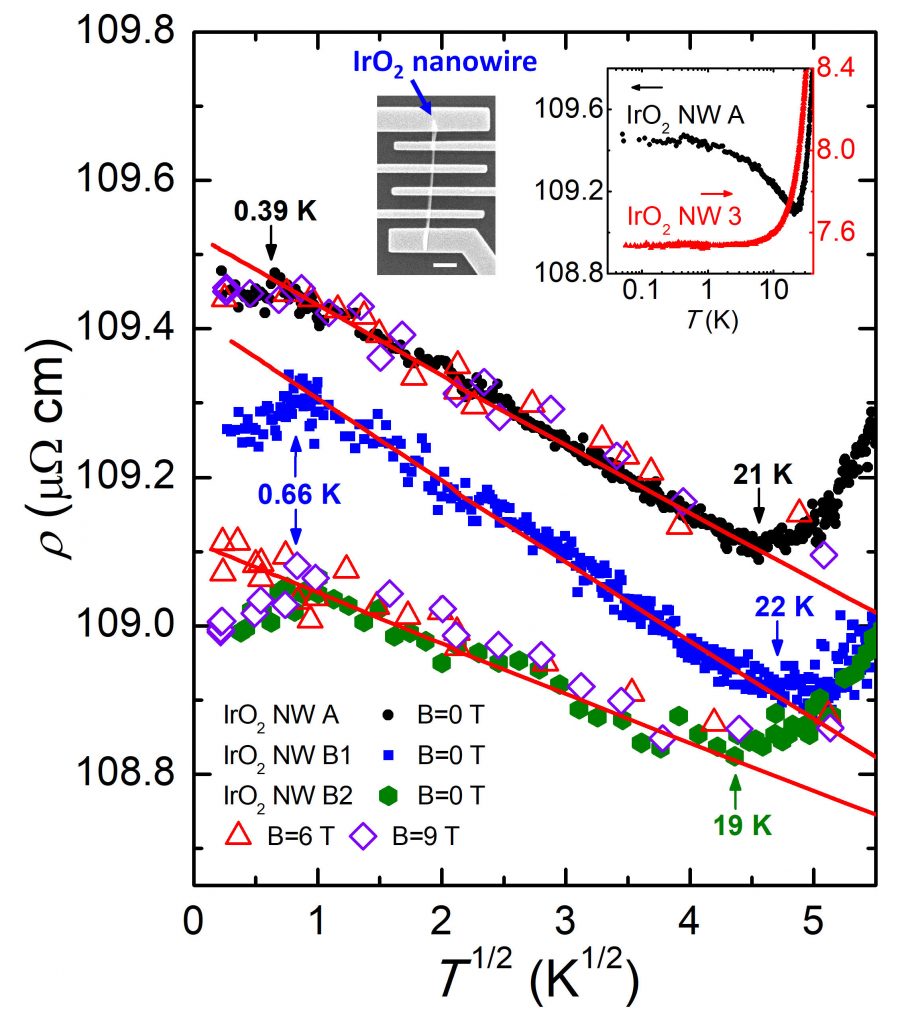Transition metal rutile nanostructures
Transition metal rutiles – a quantum simulation platform of non-Fermi liquid behavior
Our new preprint reports the discovery of orbital two-channel Kondo impurity physics in transition metal oxides of composition MO2 possessing the rutile structure. The two-channel Kondo effect was proposed by Noziere in the early 1980s but despite its conceptual simplicity and a few claims no convincing observation in quantum matter was available so far. The study is based onwell-characterized high-quality nanowires.
Oxygen vacancies in IrO2 drive a non-Fermi liquid ground state which leads to a characteristic magnetic-field independent √T increase of the resistivity at low temperatures T. This anomalous behavior has been observed over two decades in T.
A big challenge in irrefutably establishing two-channel behavior is that weakly disordered metals generically display a √T correction in their transport behavior. We therefore demonstrate that the same mechanics in antiferromagnetic RuO2 drive an orbital one-channel Kondo effect.

The data for RuO2 display a scaling collapse for a wide range of Kondo temperatures and covers almost three decades in temperature.

